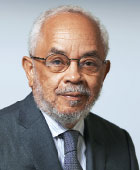On Caste and Suffering

In her new book, Caste: The Origins of Our Discontents (Random House, 2020), Isabel Wilkerson says it plainly: “A caste system has a way of filtering down to every inhabitant, its codes absorbed like mineral springs, setting the expectations of where one fits on the ladder.”
On several occasions, I have confronted the experience of being presumed to be at the bottom of the ladder. Someone had thought the presumption was justified by what Wilkerson calls an immutable trait. Yes, at every turn the trait was mine, and I could do nothing about it. Wilkerson is right in stating that the categorization process is about the exercise of power by those who see themselves in the presumed superior group.
Caste is a major structural and functional problem in many societies. Wilkerson calls it “a ranking of human value and usage.” Caste brings with it suffering. Once a group of people decide that, on the caste scale they have invented, they are above others, they feel the “need to conquer and enslave.” They articulate their own “centrality.” Then, they rank others in descending order of closeness to the superior ones. Wilkerson clarifies the rationales and characteristics of these systems. She demonstrates how far some individuals go to maintain the elaborate structures on which hang the ladders of hierarchy.
Over the years, I have noted how commonly we avoid understanding that human suffering, derived from this ranking of human value and usage, is ubiquitous. Many of those at the bottom of the rank ladder argue that their experiences of suffering are intrinsic to their identity. They may also feel that their pain, no matter how it is measured, is more intense than the suffering of others. However, Wilkerson asserts that different forms of caste structure are comparable because of the pervasive intensity of the suffering that the victims must endure. Thus, we should expect that the racist caste system of the United States, the structural problem of caste in India, and systems in other disparate geographies have similar characteristics. Of course, all of them still retain distinctive features. The most important consideration, of course, is that in these arenas, “caste is the operating system for economic, political, and social interaction. …” Those are Wilkerson’s words, and I add that the health implications should be obvious.
It is useful to contemplate caste in the context of smaller reference frames, such as the inpatient psychiatric service or even the psychiatric hospital. In these more circumscribed spaces, the sociopolitical economy is not grandly evident. Nevertheless, through attentive observation, one can uncover evidence of Michel Foucault’s notion of disciplinary power at work in a clinic through a medical caste system. The physician-anthropologist Véronique Griffith and others point out that this system may operate on sources of power such as socio-legal authority and knowledge exchange. Consequently, young professionals, just out of medical or nursing school, begin to see that they have leadership roles to fill. They have an expertise to flaunt, and they grow progressively into their positions of superiority over the patients who need their care. The caregivers eventually realize that their “talent and temperament,” as Wilkerson states it, have prepared them for these assignments of governance.
Caregivers, feeling their organizational strength, may learn how to withhold and dispense privileges. They may label as bad a patient who is unable to conform to social rules and then treat that patient with minimal compassion. Some patients will lose their autonomy, and others will receive less than optimal care. Under the pressure of this medical caste system, it is easy to forget that the patient’s position should be rooted in citizen values such as freedom, autonomy, privacy, and equality. I know that in recent decades colleagues have worked hard to weaken this disciplinary power system and to enhance patients’ participation in their care and in communication with their caregivers. However, this positive accomplishment seems under threat from the influence of the coronavirus. The virus has caused erosion of patient influence resulting from transformations in the structure of caregiving. We must remember that patients and caregivers are on a collaborative journey, not engaged in a caste enterprise benefiting those at the top of the ladder. ■



